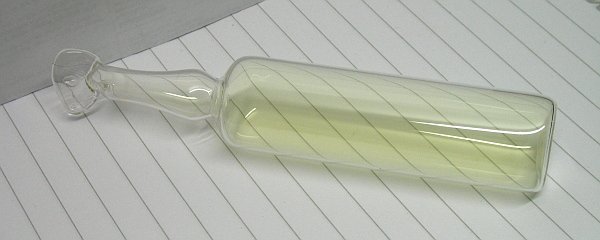19 May 2023
At room temperature and pressure, chlorine is a yellowish-green, odoriferous, and toxic gas. It has atomic number 17 and the symbol Cl. It is highly reactive and used in making bleach and disinfectants in addition to a myriad of other uses. In the First World War it was used as a chemical warfare agent.
Chlorine was first isolated by Carl Wilhelm Scheele in 1774, but he didn’t recognize it as an element, and it initially became known as oxymuriatic acid. Humphry Davy identified it as an element in 1809–10 and dubbed it chlorine, taking the name from the Greek χλωρός (green) + ‑ine. Davy’s lecture to the Royal Society on 15 November 1810 reads, in part:
After consulting some of the most eminent chemical philosophers in this country, it has been judged most proper to suggest a name founded upon one of its obvious and characteristic properties—its colour, and to call it Chlorine, or Chloric gas.*
The footnote reads:
* From χλωρος
Sources:
Davy, Humphry. “The Bakerian Lecture. On Some of the Combinations of Oxymuriatic Gas and Oxyene” (15 November 1810). Philosophical Transactions of the Royal Society of London, 101, 1811, 1–35 at 32. The Royal Society.
Miśkowiec, Pawel. “Name Game: The Naming History of the Chemical Elements: Part 2—Turbulent Nineteenth Century.” Foundations of Chemistry, 8 December 2022 (online).
Oxford English Dictionary, third edition, June 2014, s.v. chlorine, n.
Photo credit: W. Oelen, 2008. Wikimedia Commons. https://commons.wikimedia.org/wiki/File:Chlorine_ampoule.jpg Licensed under a Creative Commons Attribution-Share Alike 3.0 Unported license.

